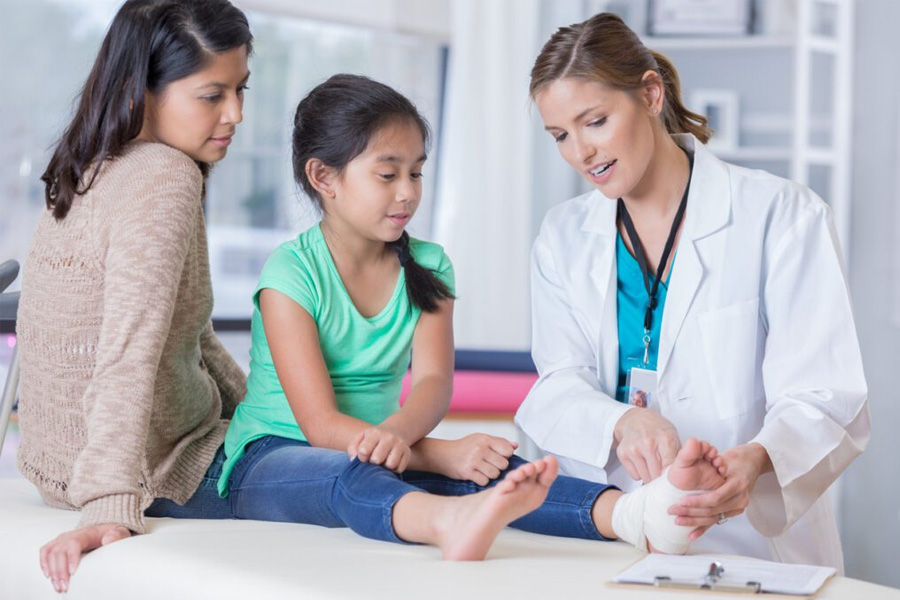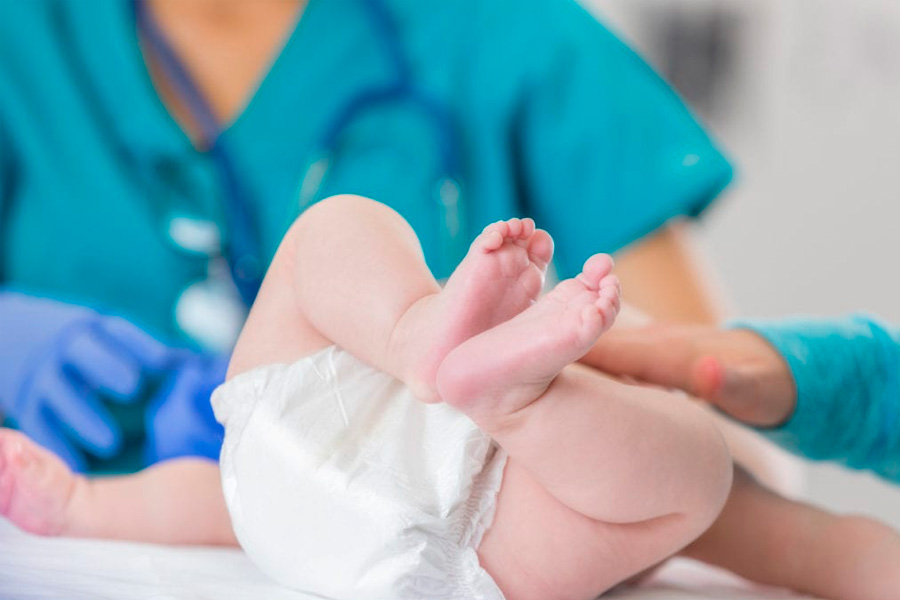If your child is complaining of foot pain or you’re worried they may have flat feet, you’re not alone. Many children face these issues, and early identification and intervention are key to ensuring the best possible outcomes. That way, you can know when to do home remedies and when to go to the podiatrist.
In this blog, we provide an overview of some common pediatric foot conditions and how they may be addressed.
Flat Feet
Flat feet happen when one or both feet have a very low arch or no arch at all. It’s common for little kids because their muscles and bones are still growing.
As they get older, their arch should start to develop. At eight years old, the prevalence of the condition in children is similar to that of the adult population.
If your child has the following symptoms, you should take them to see a pediatric podiatrist:
- foot or leg pain
- trouble walking
- one foot is wider than the other
- overpronation (when the foot rolls too far inward)
- severe flattening
Treatments for Flat Feet
If your child doesn’t experience any pain or discomfort due to their flat feet, you don’t need to worry about it. However, the symptoms mentioned above can be treated in a few different ways.
Some treatments involve the following:
- Encourage your child to go barefoot or wear minimal footwear indoors.
- Get custom orthotics. These are special inserts that provide arch support and can help distribute pressure evenly across your foot and should be reserved for those with pain or progressive deformity.
- Surgery is rarely needed.
Foot Pain Without Trauma
For children, foot pain without a specific injury can have numerous causes, such as:
Hypermobility
Joint hypermobility means that your ligaments, joints, and other tissues can move more than they should, making you very flexible. This condition used to be called being “double-jointed.”
Signs of hypermobility may be present in 25% to 50% of children below the age of 10. Yet most of them won’t experience any adverse consequences.Some kids even use their flexibility to their advantage in sports like gymnastics and dancing.
However, hypermobility in the feet can lead to a low arch or flat feet, both of which can cause pain while walking.
Kohler Disease
This is an uncommon disorder that can affect your feet when you’re a child. It’s caused by stress on the foot bones during a crucial phase of growth, usually as a result of compression.
It can cause symptoms like pain and swelling that make it hard to walk normally. Usually, only one foot is affected, and kids may compensate by walking on the side of the foot.
The good news is the disorder often resolves within six months as bones return to their normal shape and size. However, in some cases, symptoms may last up to two years.
Accessory Navicular
An accessory navicular is an extra bone some people have on the arch of the foot. It is fairly common, with a prevalence of around 2.5% among the population at birth.
If you injure your foot by twisting it, stumbling, or falling, the accessory navicular can start to hurt. You might feel pain on the inside of your foot, and it might be hard to walk or run.
Treatments for Foot Pain Without Trauma
X-rays and other imaging studies may be needed to figure out the underlying cause of foot pain. Knowing what exactly is causing your child’s foot pain helps the pediatric foot doctor know what kind of treatment is appropriate.
The reason for pain may vary, meaning treatment may also differ for everychild. To give you an idea, your child’s podiatrist may recommend options like:
- Achilles tendon stretching
- Wearing a special shoe or insert
- Physical therapy
- Pain relief medications
- A footrest
- A cast or a boot
Plantar Warts
These harmless skin growths are caused by the human papillomavirus (HPV). Kids can get them by touching someone or something with the virus, like towels or shoes.
The symptoms of plantar warts include:
- A lesion on the bottom of the foot
- Calluses if the wart grows inward
- Black dots that look like seeds
- Pain when walking or standing
Warts usually show up on the heel or ball of the foot that bear weight while walking.
Treatment for Plantar Warts
You can try home remedies to remove plantar warts. However, seek medical care if your child has:
- Bleeding
- Extreme pain
- Warts that keep multiplying despite treatment
- Diabetes
- A weak immune system
Ingrown Toenails
Ingrown toenails are a condition in which the side of the toenail grows into the skin right next to it. If ingrown toenails are not treated properly, they can cause discomfort and may even result in infection. Typically, these occur due to:
- Incorrect trimming of the nail
- Wearing shoes that are too tight
Treatment for Ingrown Toenails
Good nail care can help prevent ingrown toenails from happening in the first place. It’s important to trim their toenails straight across. That way, the ends of the nail grow over the skin and not into it.
Avoid using manicure scissors to reach under the ingrown nail, as this can cause further injury or infection. Also, don’t trim the toenails too short.
In addition, make sure your child wears comfortable, roomy shoes. Do not delay seeking medical attention once you notice signs of infection, such as:
- Increased pain
- Swelling
- Warmth
- Redness
- Pus draining from the toe
- Fever
Podiatrist for Pediatric Foot Conditions in Cincinnati, OH
Children’s feet play a crucial role in their overall health, development, and mobility. Ensuring proper care and addressing pediatric foot conditions early on is essential for their well-being. At Cincinnati Foot and Ankle Care, we provide customized treatment plansto help your child move comfortably and confidently. Our board-certified foot and ankle surgeons are well-versed in treating pediatric foot conditions.
For your convenience, we have 18 convenient locations across the Cincinnati area so it’s easy to find a clinic near you. To request an appointment, you can call the office nearest you or use our appointment request form. We look forward to helping your child enjoy a pain-free, active lifestyle!




